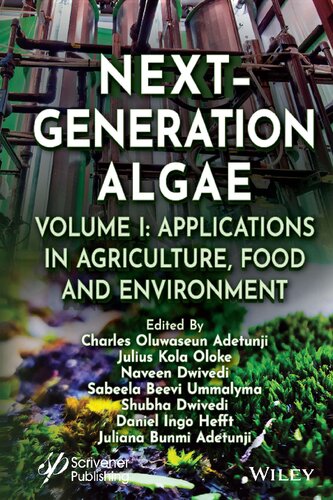

Most ebook files are in PDF format, so you can easily read them using various software such as Foxit Reader or directly on the Google Chrome browser.
Some ebook files are released by publishers in other formats such as .awz, .mobi, .epub, .fb2, etc. You may need to install specific software to read these formats on mobile/PC, such as Calibre.
Please read the tutorial at this link: https://ebookbell.com/faq
We offer FREE conversion to the popular formats you request; however, this may take some time. Therefore, right after payment, please email us, and we will try to provide the service as quickly as possible.
For some exceptional file formats or broken links (if any), please refrain from opening any disputes. Instead, email us first, and we will try to assist within a maximum of 6 hours.
EbookBell Team

4.1
70 reviewsThis book brings together experts in relevant fields to describe the successful application of algae and their derivatives in agriculture, improving agricultural sustainability, harvesting and processing, food security, fishery, aquafarming, agriculture pollution, and state-of-the-art developments of algae in commercial and agriculture utilization.
This book provides up-to-date and cutting-edge information on the application of algae in producing sustainable solutions to various challenges that arise from an increase in agricultural production, as well as its utilization in the bioremediation of industrial wastewater. Moreover, the book provides detailed information about the recent advancements in smart microalgae wastewater treatment using Internet of Things (IoT) and edge computing applications. Other topics covered include the use of microalgae in various applications; the use of algae to remove arsenic; algae’s role in plastic biodegradation, heavy metal bioremediation, and toxicity removal from industrial wastewater; the application of DNA transfer techniques in algae; the use of algae as food and in the production of food, ascorbic acid, health food, supplements, and food surrogates; relevant biostimulants and biofertilizers that could be derived from cyanobacterials and their role in sustainable agriculture; and algae’s application in the effective production of biofuels and bioenergy.
Audience
This book is aimed at a diverse audience including professionals, scientists, environmentalists, industrialists, researchers, innovators, and policymakers who have an interest in bioremediation technologies for extremely polluted environments, especially in water, air, and soil.